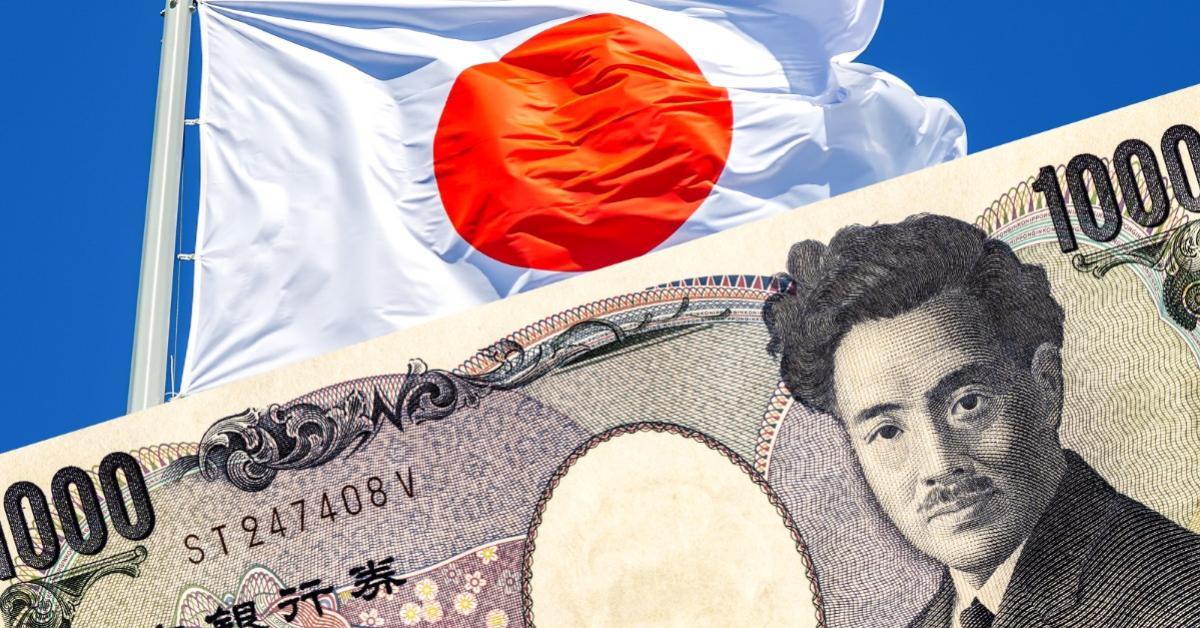
The recent hefty depreciation of the yen to a twenty-four-year low against the dollar has raised eyebrows due to the yen’s traditional safe haven role in times of turmoil, such as the war in Ukraine. The yen’s decline had already started when major central banks signaled a tightening of monetary policy to fight inflation while the Bank of Japan (BoJ) doubled down on its loose monetary policy and zero target for ten-year bond yields. The depreciation accelerated further when oil and gas prices surged, weakening Japan’s terms of trade.
Mainstream analysts got wary about the yen’s tumble and its negative impact on import prices and consumption, but recommended the BoJ to continue its ultraloose monetary policy in order to reflate the economy and support growth. What these analysts fail to grasp is that in a longer-term perspective, the yen’s value relative to other currencies is anchored in economic fundamentals driven by monetary developments and its purchasing power.
Since the sharp appreciation of the yen following the Plaza Accord in 1985, the currency has preserved its relative strength versus the dollar despite Japan’s ultraloose fiscal and monetary policies. This is because money creation has run at a slower pace in Japan than in the US, as the Plaza agreement ushered in Japan’s lost decades, illustrating well how disruptive government interventions in foreign exchange markets can be.
The Plaza Accord
For more than three decades, following its sudden appreciation as a result of the 1985 Plaza Accord (graph 1), the yen has followed a steady path versus the dollar. The Plaza agreement between G-5 countries—the United States, West Germany, France, Japan, and the United Kingdom—marked the first large experiment in international monetary cooperation to revalue the exchange rate system.
At the behest of the United States, which wanted to devalue the dollar and reduce the trade deficit, the five central banks agreed to intervene in currency markets to rebalance international trade and growth. The perceived overvaluation of the US dollar was the result of relatively high interest rates promoted by the Fed during 1980–82 to quell inflation, combined with Ronald Reagan’s expansionary fiscal policy during 1981–84, which caused capital inflows and an appreciation of the dollar.
High budget deficits together with buoyant domestic demand swelled the trade deficit, producing the famous 1980s “twin deficits.” In reality, the exchange rate was not the problem, but US fiscal profligacy and excessive money supply expansion, which exceeded 12 percent in 1983. Instead of fixing domestic policies, the US government talked Japan and Germany into manipulating their exchange rates and increasing domestic demand. As Ludwig von Mises put it so aptly: “What governments call international monetary cooperation is concerted action for the sake of credit expansion.”
Graph 1: Japanese yen to US dollar spot exchange rate
picture1.png
Following concerted interventions by central banks, the yen appreciated from about 240 units per dollar in September 1985 to 153 units in 1986. By 1988, the yen had almost doubled in value to an exchange rate of 120 units per dollar. Many analyses, including International Monetary Fund reports, concur that the significant government-driven appreciation of the yen sowed the seeds for Japan’s subsequent long-lasting economic debacle.
In the first half of 1986, as Japan’s exports collapsed following the yen’s appreciation, the economy entered a recession. The BoJ’s sales of dollars also squeezed the money supply and domestic demand. The authorities overreacted and introduced a sizable macroeconomic stimulus, cutting interest rates five times, by a cumulated 3 percentage points, by 1989. A large fiscal package was introduced in 1987, even though the economy was already recovering. Credit growth then surged, fueling a stock market and real estate boom that burst in early 1990 and triggered almost three decades of dismal economic performance.
Monetary Developments Kept the Yen Strong
Instead of allowing a curative recession to liquidate the malinvestments of the late 1980s boom, Japan doubled down on growth stimuli, which eroded the capital stock, labor productivity, and real wages and brought long-lasting economic stagnation. Based on Japan’s ultraloose monetary and fiscal policies, one would have expected a dramatic weakening of the yen.
Yet growth stimuli kept zombie companies and banks riddled with bad assets alive, slashing credit growth. In addition, private capital outflows surged due to high economic uncertainty fueled by the government’s antimarket policies, denting further money creation. Even though the BoJ’s balance sheet increased several times more than its peers’ due to aggressive asset purchases (graph 2), the overall increase in the broad money supply (M3) remained much subdued relative to the US and the euro area (graph 3). Therefore, Japan’s slower money supply growth explains both the relative strength of the yen following its sharp appreciation episode and the subdued inflation in Japan. In a longer-term perspective, the mainstream’s sudden concerns about a dramatic weakening of the yen seem misplaced, in particular when combined with the inconsistent recommendation that the BoJ stick to its loose monetary policy.
Graph 2: Balance sheet size: Bank of Japan versus other central banks
picture2.png
Source: Borrallo Egea and del Río López, Banco de España.
Graph 3: Money supply (M3) growth in Japan vs. US and euro area
picture3.png
Note: In order to better reflect changes in purchasing power parities, which are the key driver of exchange rate parities, the growth in M3 has been deflated by the growth in real GDP.
The Plaza Accord and the US Trade Deficit
To what extent have the Plaza interventions solved the US trade deficit? The US trade deficit continued growing in 1986 and 1987 and came down only later, fueling skepticism about the agreement’s positive impact. In “Plaza Accord, 30 Years Later,” Jeffrey Frankel concedes that governments are not able to alter the exchange rate for a long period without a corresponding change in fundamentals but argues that exchange rate interventions can be effective in the short term, in particular if they shape market expectations and are coordinated among major central banks as they were in 1985.
Thus, Frankel believes that the Plaza Accord interventions proved useful in bringing down both the seemingly overvalued US dollar and the trade deficit, but only with a lag of two years. Yet this explanation ignores the fact that the US economy slowed considerably after the October 1987 stock market crash and eventually landed in a recession in 1990.
In addition, the budget deficit also shrank after 1987, pointing to slowing money creation. Indeed, the annual growth rate of the M3 money aggregate decelerated considerably from a peak of 12.2 percent in 1983 to 8.9 percent in 1985 and 4.1 percent in 1989 (graph 4). This illustrates very well Mises and Murray Rothbard’s insight that the balance of payments is driven by purposeful changes in people’s cash balances and is not “unfavorable” if there is a gold drain, which is a mercantilist fallacy.
A trade deficit reflects a voluntary reduction in the amount of money held by the public in favor of buying goods and services or it reflects a domestic inflationary policy increasing the nominal incomes of citizens. In the case of the USA, the dollar’s status as the world’s main reserve currency allows the use of fiscal and monetary expansion to finance trade deficits relatively easily, with the dollar being less prone to depreciation than other fiat currencies. An acceleration in money creation can increase the trade deficit and vice versa, which does not imply that the dollar is overvalued by markets and that governments need to intervene to adjust the exchange rate parity.
Graph 4: US broad money (M3) growth rate
picture4.png
Conclusion
The equilibrium exchange rate between two currencies is given by their purchasing power parity—i.e., the ratio of the purchasing power of each in terms of other economic goods. Any attempt to move the exchange rate from its market value through government intervention is likely to be undone by market arbitrage, which restores the exchange rate to its purchasing power parity. A long-lasting change in currency value can take place when governments use monetary policy levers to adjust interest rates and the money supply. In this case, the change in foreign exchange rates mirrors the movement of domestic prices and alters the trade balance, as Mises explained. However, monetary policy interventions introduce other distortions into the economy which can have severe economic consequences, as illustrated by Japan’s lost decades after the Plaza Accord.







